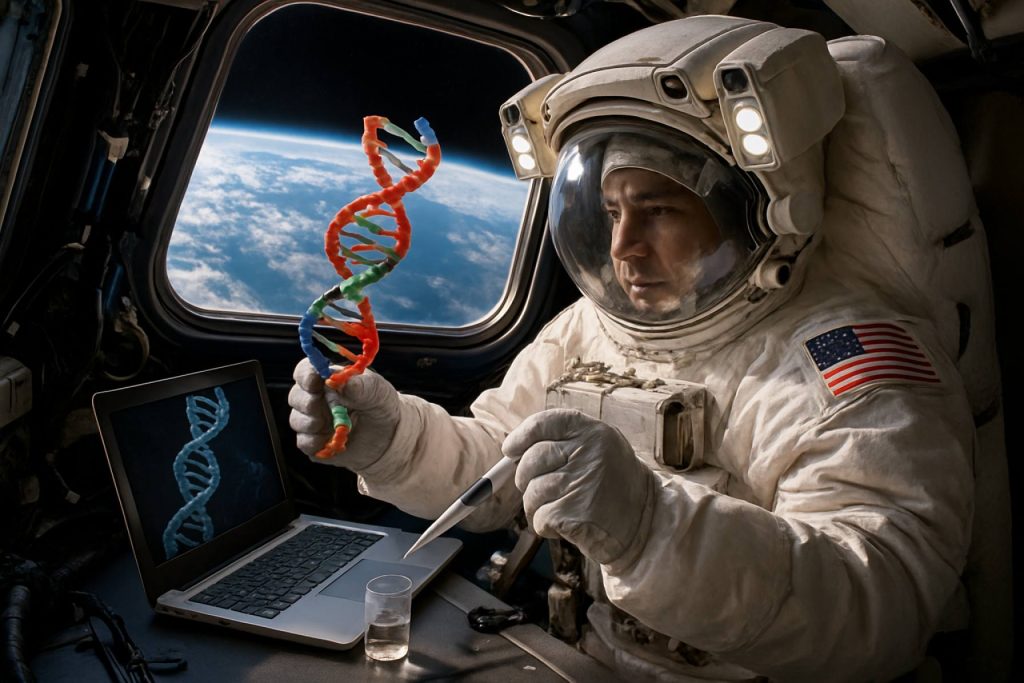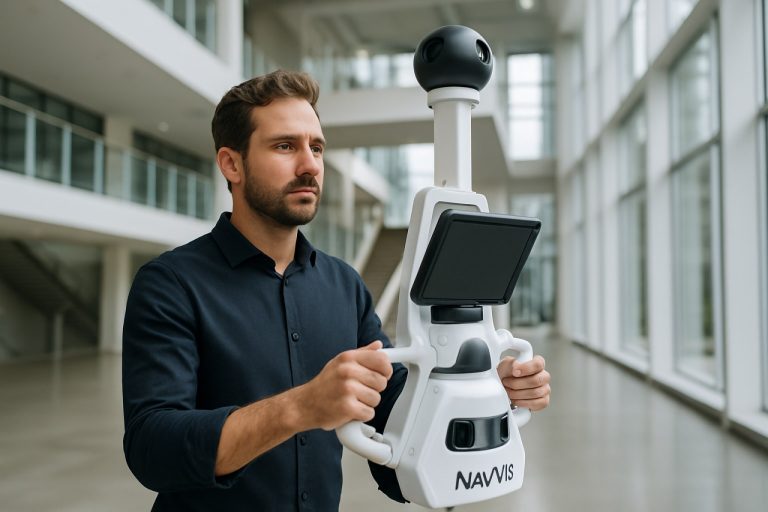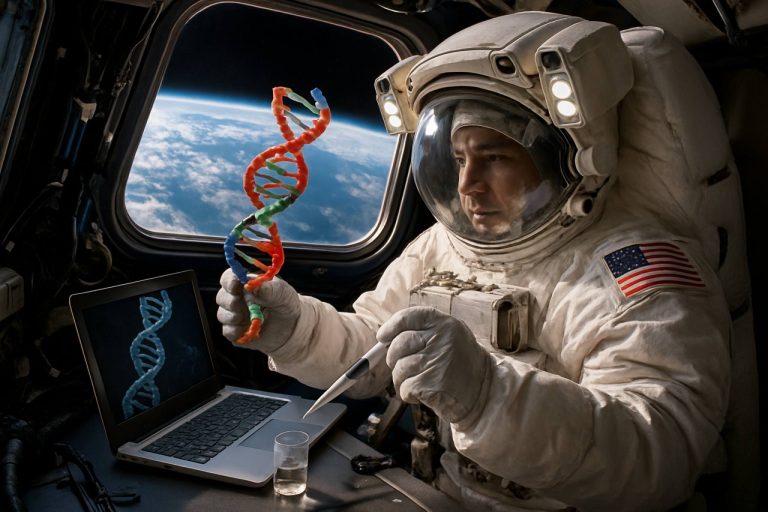
How CRISPR Gene Editing is Transforming Space Exploration: Unlocking New Frontiers for Biology and Human Survival Beyond Earth
- Introduction: The Promise of CRISPR in Space
- Why Edit Genes in Microgravity? Scientific Rationale and Objectives
- Technical Challenges: Performing CRISPR Experiments in Space Environments
- Case Studies: Notable CRISPR Experiments Conducted on the ISS
- Potential Applications: Human Health, Agriculture, and Synthetic Biology in Space
- Ethical and Safety Considerations for Gene Editing Beyond Earth
- Future Directions: CRISPR’s Role in Long-Term Space Missions and Colonization
- Conclusion: The Next Steps for CRISPR Gene Editing in Space Research
- Sources & References
Introduction: The Promise of CRISPR in Space
The advent of CRISPR-Cas9 gene editing technology has revolutionized the field of genetics, offering unprecedented precision and efficiency in modifying DNA. As humanity sets its sights on long-duration space missions and potential colonization of other planets, the application of CRISPR in space environments has emerged as a promising frontier. Space presents unique challenges to living organisms, including increased radiation, microgravity, and limited resources, all of which can impact health, reproduction, and survival. CRISPR’s ability to rapidly and accurately edit genes holds the potential to address these challenges by enabling the development of organisms—both human and microbial—better suited to withstand the rigors of space travel and extraterrestrial environments.
Researchers are exploring how CRISPR can be used to enhance crop resilience, engineer beneficial microbes, and even mitigate the health risks astronauts face, such as muscle atrophy, bone loss, and increased cancer susceptibility due to cosmic radiation. Early experiments conducted aboard the International Space Station (ISS) have demonstrated the feasibility of performing CRISPR-based gene editing in microgravity, paving the way for more complex applications in the future. The integration of CRISPR into space biology not only promises to safeguard astronaut health but also supports the sustainability of life-support systems and food production beyond Earth. As this technology matures, it could become a cornerstone of human adaptation and survival in the final frontier NASA Nature.
Why Edit Genes in Microgravity? Scientific Rationale and Objectives
Editing genes in microgravity environments, such as those found aboard the International Space Station (ISS), offers unique scientific opportunities to understand how living organisms respond to the stresses of spaceflight. Microgravity fundamentally alters cellular processes, including gene expression, DNA repair, and cell division. By applying CRISPR gene editing in this context, researchers can dissect the molecular mechanisms underlying these changes, which are often masked or compensated for by gravity on Earth. This approach enables the identification of genes critical for adaptation to space, resilience against radiation, and maintenance of cellular health during long-duration missions.
The primary objectives of CRISPR gene editing in microgravity include: (1) investigating how spaceflight affects genome stability and mutation rates; (2) identifying genetic pathways that confer resistance to space-induced stressors, such as cosmic radiation and oxidative damage; and (3) developing strategies to engineer organisms—plants, microbes, or even human cells—that are better suited for space environments. These insights are essential for advancing bioregenerative life support systems, improving astronaut health, and enabling sustainable long-term exploration of the Moon, Mars, and beyond. For example, gene editing could be used to enhance crop resilience for space agriculture or to modify microbes for efficient waste recycling and resource production in closed habitats.
Ultimately, CRISPR-based research in microgravity not only expands our understanding of fundamental biology but also paves the way for innovative biotechnological solutions tailored to the unique challenges of space exploration (NASA; Nature).
Technical Challenges: Performing CRISPR Experiments in Space Environments
Performing CRISPR gene editing experiments in space presents a unique set of technical challenges that differ significantly from terrestrial laboratories. One of the primary obstacles is the microgravity environment, which affects fluid dynamics, cell culture, and the delivery of CRISPR components into target cells. In microgravity, liquids behave unpredictably, complicating pipetting, mixing reagents, and ensuring even distribution of gene-editing materials. This can lead to inconsistent results or reduced efficiency in gene editing processes.
Another challenge is the increased exposure to cosmic radiation aboard spacecraft or the International Space Station (ISS). Radiation can induce DNA damage, potentially interfering with the precision of CRISPR edits or causing unintended mutations. This necessitates rigorous controls and post-experiment analysis to distinguish between CRISPR-induced changes and radiation-induced mutations. Additionally, the limited availability of laboratory equipment and consumables in space requires miniaturized, automated systems that can perform complex molecular biology protocols with minimal crew intervention.
Sterility and contamination control are also heightened concerns in the closed environment of a spacecraft. Maintaining sterile conditions for cell cultures and reagents is critical, as contamination could compromise experiments and pose health risks to crew members. Furthermore, the need for remote operation and monitoring means that CRISPR experiments must be designed for automation and real-time data transmission back to Earth for analysis and troubleshooting.
Despite these challenges, successful demonstrations of CRISPR gene editing in space, such as those conducted on the ISS, are paving the way for future research and biotechnological applications beyond Earth NASA.
Case Studies: Notable CRISPR Experiments Conducted on the ISS
The International Space Station (ISS) has become a pioneering platform for testing CRISPR gene editing in the unique environment of microgravity. One of the most notable experiments was conducted in 2019 by the Genes in Space-6 team, in collaboration with NASA. This experiment aimed to demonstrate the feasibility of using CRISPR-Cas9 to induce targeted DNA breaks in yeast cells aboard the ISS. The primary objective was to assess whether the DNA repair mechanisms in microgravity differ from those on Earth, which has significant implications for astronaut health and long-duration space missions.
The Genes in Space-6 experiment successfully showed that CRISPR-induced double-strand breaks could be generated and repaired in space. The results indicated that the basic cellular machinery for DNA repair remains functional in microgravity, although further analysis is ongoing to determine if there are subtle differences in repair fidelity or efficiency. This experiment marked the first time that CRISPR gene editing was performed off-Earth, setting a precedent for future genetic research in space environments (NASA).
Another significant case study involved the use of CRISPR to study microbial adaptation and antibiotic resistance in space. Researchers from the NASA Ames Research Center have explored how gene editing can help understand and potentially mitigate the risks posed by spaceflight-induced changes in microbial behavior. These experiments are crucial for developing strategies to protect astronaut health and ensure the safety of future deep-space missions.
Potential Applications: Human Health, Agriculture, and Synthetic Biology in Space
The application of CRISPR gene editing in space holds transformative potential across several domains, notably human health, agriculture, and synthetic biology. In the context of human health, astronauts are exposed to unique stressors such as microgravity and heightened cosmic radiation, which can lead to increased risks of cancer, muscle atrophy, and immune dysfunction. CRISPR could be harnessed to develop gene therapies that enhance DNA repair mechanisms or bolster resistance to radiation, potentially safeguarding crew members on long-duration missions to Mars or beyond (NASA).
In agriculture, the ability to edit plant genomes in situ offers a pathway to cultivate crops that are more resilient to the harsh conditions of space habitats, such as limited water, altered gravity, and increased radiation. CRISPR could enable the rapid development of plants with improved nutrient profiles, faster growth cycles, or enhanced resistance to spaceborne pathogens, supporting sustainable food production for space crews (National Science Foundation).
Synthetic biology in space, powered by CRISPR, opens avenues for engineering microorganisms to produce essential materials, medicines, or even bioplastics from limited resources. This could reduce dependence on Earth resupply and enable closed-loop life support systems. The precision and adaptability of CRISPR make it a cornerstone technology for future biomanufacturing and regenerative life support strategies in extraterrestrial environments (European Space Agency).
Ethical and Safety Considerations for Gene Editing Beyond Earth
The application of CRISPR gene editing in space introduces a complex array of ethical and safety considerations that extend beyond those encountered on Earth. In the unique environment of space, genetic modifications—whether in microorganisms, plants, or humans—could have unpredictable effects due to factors such as microgravity, increased radiation, and closed ecological systems. One major ethical concern is the potential for unintended consequences: gene edits that are benign or beneficial on Earth might behave differently in space, potentially leading to unforeseen health risks or ecological disruptions within spacecraft or extraterrestrial habitats. This raises questions about the adequacy of current risk assessment protocols and the need for new guidelines tailored to space environments (NASA).
Another significant issue is the governance of gene editing activities beyond Earth. There is currently no comprehensive international framework specifically addressing the use of CRISPR or other gene editing technologies in space. This regulatory gap complicates the establishment of oversight, accountability, and consent, especially in multinational missions or future off-world colonies. The prospect of editing the human genome to enhance resistance to radiation or other space hazards also raises profound ethical questions about human enhancement, consent, and the potential for genetic inequality among space travelers (United Nations Office for Outer Space Affairs).
Finally, the containment and control of genetically modified organisms (GMOs) in space habitats is a critical safety concern. Accidental release or horizontal gene transfer could disrupt closed life support systems or pose biosecurity risks. Robust biocontainment strategies and transparent international collaboration will be essential to address these challenges responsibly (National Academies of Sciences, Engineering, and Medicine).
Future Directions: CRISPR’s Role in Long-Term Space Missions and Colonization
As humanity sets its sights on long-term space missions and the eventual colonization of other planets, CRISPR gene editing is poised to play a transformative role in overcoming the unique biological challenges posed by extraterrestrial environments. Prolonged exposure to microgravity, cosmic radiation, and limited resources can lead to muscle atrophy, bone density loss, immune dysfunction, and increased cancer risk in astronauts. CRISPR offers the potential to engineer human cells for enhanced resistance to radiation, improved metabolic efficiency, and adaptation to low-gravity conditions, thereby safeguarding astronaut health during extended missions NASA.
Beyond human health, CRISPR could be instrumental in developing crops and microorganisms tailored for space agriculture and life support systems. By editing plant genomes for faster growth, higher nutrient content, and resilience to space-induced stresses, CRISPR can help ensure sustainable food production on spacecraft or extraterrestrial colonies European Space Agency (ESA). Similarly, engineered microbes could recycle waste, produce essential nutrients, or even generate pharmaceuticals on demand, reducing reliance on Earth-based resupply.
Looking ahead, the integration of CRISPR into space exploration strategies will require robust ethical frameworks and international collaboration to address concerns about unintended consequences and biosecurity. As research advances, CRISPR’s precision and versatility may become indispensable tools for enabling human survival and thriving in the harsh environments of deep space and planetary outposts National Academies of Sciences, Engineering, and Medicine.
Conclusion: The Next Steps for CRISPR Gene Editing in Space Research
The future of CRISPR gene editing in space research is poised at a critical juncture, with both immense promise and significant challenges ahead. As missions to the Moon, Mars, and beyond become more feasible, the ability to manipulate genetic material in microgravity and high-radiation environments could be transformative for astronaut health, crop resilience, and even the development of life support systems. The next steps will require a concerted effort to address technical, ethical, and regulatory hurdles. Key priorities include optimizing CRISPR delivery systems for use in space, ensuring the stability and fidelity of gene edits under cosmic radiation, and developing robust protocols for monitoring unintended genetic changes over time.
International collaboration will be essential, as agencies like NASA and the European Space Agency continue to invest in space biology research. Additionally, the establishment of clear ethical guidelines and oversight mechanisms, potentially coordinated by organizations such as the World Health Organization, will be crucial to ensure responsible use of gene editing technologies beyond Earth. As research progresses, pilot studies aboard the International Space Station and future lunar or Martian habitats will provide invaluable data on the feasibility and safety of CRISPR applications in space. Ultimately, the integration of CRISPR gene editing into space exploration strategies could redefine the boundaries of human adaptation and survival in the cosmos, marking a new era in both biotechnology and space science.
Sources & References
- NASA
- Nature
- National Science Foundation
- European Space Agency
- United Nations Office for Outer Space Affairs
- National Academies of Sciences, Engineering, and Medicine
- World Health Organization



